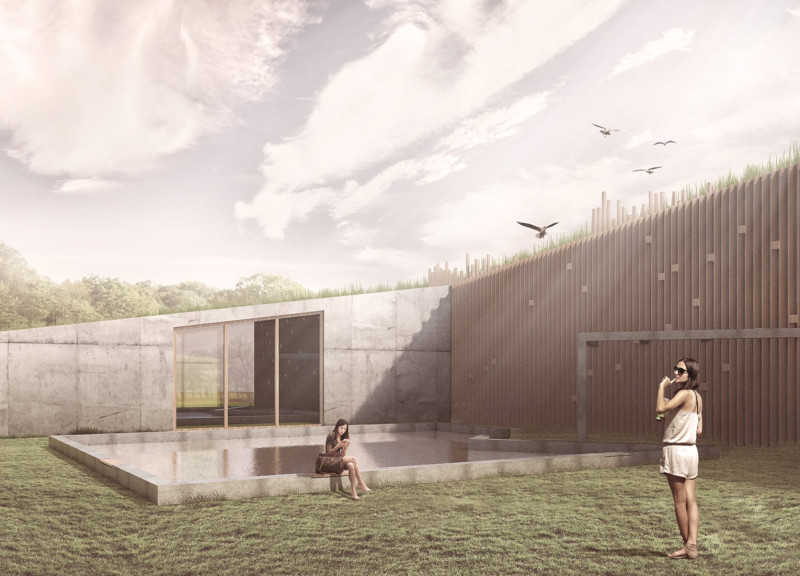5 key facts about this project
The Great Kemeri Bog Visitors' Center is located within Kemeri National Park, designed to improve visitor interaction while focusing on environmental protection. It serves as a resource for nature enthusiasts and aims to educate the public about the rich biodiversity of the area. The design emphasizes working in harmony with nature, incorporating features that support wildlife movement and create a connection between visitors and their surroundings.
Living Roof
The living roof on the building is a key aspect that allows local plants to thrive. It provides a space for wildlife to move and contributes to managing heat and rainwater. By using this green roof, the design promotes a healthy ecosystem and reduces the impact of the structure on the environment.
Façade and Courtyard
The façade of the inner courtyard includes spaces designed for birds to nest, enhancing the local wildlife community. Within the courtyard is an ecological pool that acts as both a beautiful landscape feature and a water source for animals. This thoughtful use of natural elements highlights the commitment to education and conservation issues.
Visitor Experience
Two distinct paths guide visitors through the space. One path allows people to explore galleries of exhibits and video displays before reaching the inner courtyard. The other path provides an opportunity to appreciate the building's relationship with the natural landscape from the outside, presenting a unique view before entering. This setup encourages visitors to engage with both the architecture and the surrounding nature.
Interior Organization
Inside the center, the layout supports educational activities. The ground floor includes permanent displays and operational areas, with an auditorium for presentations and community programs. The upper floor features changing exhibits and visitor amenities, enhanced by light shafts that bring natural light into the space. Wooden beams are an important design detail, providing a connection to the outdoor environment while filtering light throughout the interior. The overall design is practical and instructive, inviting visitors to learn about and appreciate the unique natural setting of Kemeri National Park.






















































